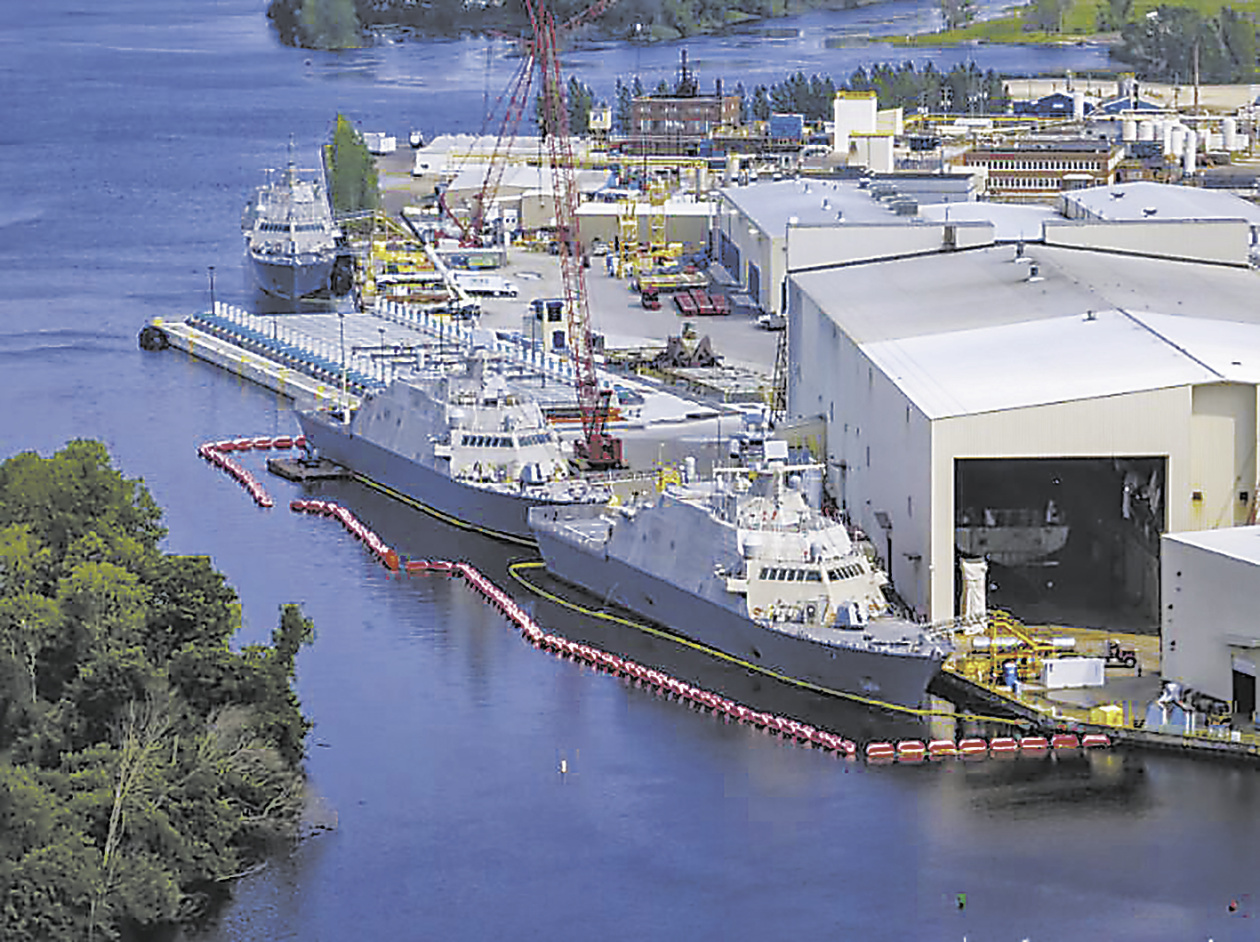The continuing decline in ship-building capacity has worried the US Navy in recent years. The US Navy’s ship-building capacity is in its worst state in 25 years, although the Pentagon is trying to adjust it by various means, the US defence news said on the 12th, but“There is no short-term solution”.

On July 12, several warships under construction docked at a shipyard in Wisconsin.
“The U. S. Navy lags behind China in the number of ships at its disposal, and the gap is widening,” the report said. According to a Pentagon report, China’s Navy has surpassed the U.S. Navy in the number of ships since 2020 and is now the largest in the world, the U. S. Navy because of the cold war-era construction of a large number of ships have entered the retirement peak, the total number of continuous decline, is now less than 300.
“At a time when the US Navy is facing a growing global threat”, there is a growing backlog of production and maintenance of its ships. The report said the primary cause of this dilemma is the continued contraction of the U. S. Navy shipbuilding industry. Citing the Marinette Maritime Corporation, which is building the constellation class frigate for the U.S. Navy, the report said that the American subsidiary of the Italian shipyard in Wisconsin was contracted by the U.S. Navy, up to 10 constellation-class frigates should be built in the next few years, but the company can only produce one frigate a year because of various factors, including a lack of labor. “One of the main problems facing the industry is that it is very challenging to recruit and retain a new workforce to build ships as workers with decades of experience retire,” said Andreini, a 25-year-old welder who previously made parts for garbage trucks, “Many partners are reluctant to work in the shipbuilding industry because of its reputation for poor working conditions and insecurity,” he said. Carlos del Toro, the United States Navy, described the retention of Marinette’s past employees as “Extremely bad”. The story is similar at most other shipyards, including even Huntington Ingalls Industries. The company makes destroyers and amphibious assault ships for the Navy in Mississippi and aircraft carriers and nuclear submarines in Virginia, but it has struggled to find enough qualified shipbuilders.
In addition to the labor shortage, the report said that most of the blame for the current woes of the U.S. shipbuilding industry lies with the U.S. Navy itself, because the U. S. Navy often changes requirements, requires upgrades, and adjusts designs after the shipyard starts construction. This led to a series of serious delays, “This is reflected in cost overruns, technical challenges and delays on the USS Ford, the Navy’s newest aircraft carrier, the disruption of the stealth destroyer’s artillery systems due to high artillery costs, and early decommissioning of the littoral combat ship due to its vulnerability to failure.”.
Despite claims by the US Navy to learn these lessons, but apparently that didn’t happen-the constellation-class frigates built by Marinette were designed to dramatically reduce their production costs and cycle times. Instead of adopting an entirely new design, the U.S. Navy opted for the more mature models already in use by the French and Italian navies, slightly modifying 15 percent of the design to meet U.S. Navy specifications, this will reduce costs and speed up construction as much as possible. Instead, Bryan Cluck, an analyst at the Hudson Institute, a think-tank, says the navy has redesigned as much as 85% of the vessel’s design, resulting in significant cost increases and construction delays. Construction of the first ship, Constellation, began in August 2022 and delivery has been delayed to 2029 three years later than originally planned.
The report also attributed the decline in U. S. shipbuilding capacity to“China-russia naval competition, Somali piracy and the Houthi armed forces continue to attack merchant ships brought about by the changing global threat,” and so on.
“Global Times” reporters noted that the U. S. Navy recently as soon as possible to expand the size of the top priority. The Navy will continue to shrink in fiscal 2025, according to the latest version of its“30-year plan for building ships” submitted to Congress, it plans to procure two guided missile destroyer, an attack submarine, an amphibious carrier, an Landing Ship Medium and a missile frigate, and to decommission 19 combat vessels, including nine vessels of maximum service (six surface combat vessels and three nuclear submarines) and 10 combat vessels not of maximum service, the fleet, which includes two missile cruisers, two littoral combat ship, a amphibious transport dock and five expeditionary transport ships, will be decommissioned early because of high maintenance costs that make it difficult to respond effectively to a real threat.
Eric Rabus, a longtime Navy analyst at the Congressional Budget Office, said U.S. Navy ship building is in “Bad shape”– the worst in 25 years. “I’m panicking,” he said. “I don’t see a quick and easy way out of this.”